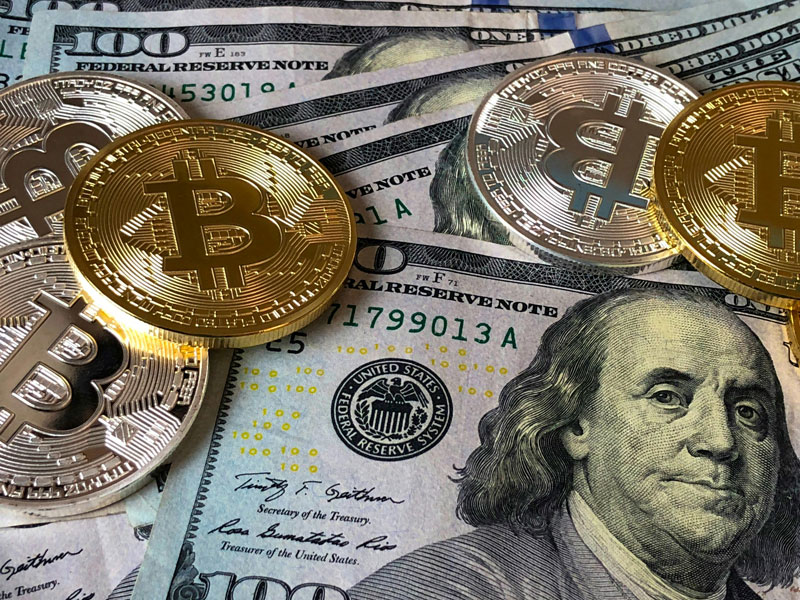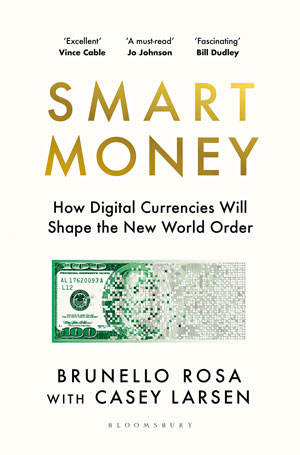
Credit: David McBee 
If money is politics in an era of shifting geopolitical sands, central bank digital currencies (CBDCs) and the underlying infrastructure will be a crucial chip in the competition between China and the West, claims Brunello Rosa, head of consultancy firm Roubini & Rosa Associates, in his book Smart Money: How Digital Currencies Will Shape the New World Order. A former Bank of England economist who teaches at the LSE and Bocconi University and advises a UK parliamentary committee on CBDCs, the Italian thinker has an inside view of how technology shapes the emerging monetary order. In an exclusive interview with World Finance’s Alex Katsomitros, Rosa argues that China’s digital renminbi is part of a ploy to undermine the western monetary system in tandem with its Belt and Road Initiative, whereas President Trump’s digital dollar ban and culture wars over privacy and ‘programmability,’ the ability of CBDC issuers to automatically set conditions for their use, may set the US back.
Why has a technical topic such as CBDCs become so politicised?
They are indeed a technical adjustment to the liability side of central banks’ balance sheets. But there is also a geopolitical dimension, because this is how China can internationalise the renminbi. There are also concerns over privacy, an inherently political issue. Finally, flags, national anthems and currencies are symbols of sovereignty. Once you start altering them, politicians want to have a say.
Are concerns over privacy and programmability warranted?
The ability to track transactions raises concerns, but banks and credit card issuers already do that. Central banks provide stronger privacy guarantees. An authoritarian government could use this information against you. But the problem is the authoritarian state, not the instrument. They could abuse any technology. So this concern is not entirely warranted. Plus, there are ways to minimise the problem, although not completely eliminate it. It is different with programmability. People believe that governments and central banks will control how they spend money.
You want to buy cigarettes and the state forbids that. But the probability is low. Programmability allows money to do things it couldn’t do before due to embedded smart contracts. This feature could be used for good or bad purposes. Think of nuclear energy: you can have unlimited energy or a nuclear bomb. It is not the technology that matters, it is the way it is used.
The new US administration supports cryptocurrencies, but President Trump has banned the digital dollar. What is your take on US policy?
The US has a different tradition from China’s, so instead of a state-backed CBDC, they chose a private-sector solution: stablecoins. They will just regulate stablecoins and other cryptos. Eventually they will realise, possibly after a crisis, that the system only works well with a CBDC as the foundation of trust. Without it, the digital asset environment is inherently unstable.
Some think that stablecoins could help the dollar remain the global reserve currency in the digital era. Do you agree?
I do. China has made its move with a state-backed solution that will facilitate the international use of the renminbi. The US decided to go the other way with stablecoins. Even with the narrower definition of stablecoins, issuers will need to keep a large amount of liquid assets to guarantee the one-to-one peg with the dollar. Those dollar-denominated assets are almost certainly US Treasuries, which helps sustain demand for them despite reduced confidence in US assets amidst a trade war. The US response is a smart move, but their success depends on how acceptable these stablecoins will be worldwide.
Would a retail CBDC pose a threat to commercial banks?
People fear it could lead to disintermediation and ask: Why should I keep my money in a commercial bank deposit account, when I can keep it in a safer central bank account? There is only limited risk, because in a two-tier system, the central bank would have liabilities, but commercial banks would maintain the customer relationship, issuing the wallets.
You can introduce – and Europeans want to do that – holding limits on the amount of CBDC held by individuals. Eventually banks will continue to extend credit, not central banks. If you want a loan, you will still have to go to the bank. But banks will need to adapt to the new reality. Making money out of payments to people and companies may not be possible. They need to find new revenue streams. For example, they can issue their own stablecoins or tokenise their deposits and add functionalities to their liabilities.
What is the link between smart money and the global race for resources?
It is the same geopolitical dimension at play when we talk about rare earths, tariffs, seizing territory, say Greenland or Taiwan. China has launched the Belt and Road Initiative, its sister project called Digital Silk Road, its CBDC and also agenda 2025. So there is a continuum of projects bringing China to the next level of technological development. Once you start building infrastructure for bridges and ports, you also build digital infrastructure: payment centres, data centres, 5G, telecommunication satellites, e-government in various countries. Part of this is the payment system where the digital renminbi will run. All these things are closely related.
Is de-dollarisation their endgame?
After WWII, to turn the dollar into the global reserve currency the US decided to run a current account deficit, which is what the current administration is worried about. Well, they wanted it in the first place! They also accepted having an open capital account, meaning that they had to send dollars overseas to pay for imported goods, but also to be converted into other currencies. China does not want to do that. China wants to remain an export-led economy, not a consumption-led economy like the US, and therefore it has a current account surplus, meaning that more renminbi comes in the country than goes out. They do not want to open their capital account. That would cause a massive outflow of money because people fear that the government can seize their money. So how can the renminbi become a reserve currency? Well, technology is the answer. If China builds the rails on which digital payments are run, it wouldn’t matter whether it has a current account surplus. What matters is who builds and controls that infrastructure, and it’s China. That is the way for China to establish a reserve currency in its sphere of influence.
Are there any risks for China?
If China does not achieve these goals peacefully, it may become more aggressive geopolitically. Instead of focusing on economic prosperity, it may get into foreign adventures, something it has avoided over the last 100, if not 1,000 years. China has never been expansionist. They might be tempted to do so, but I don’t see this as the most likely scenario.
Can the West catch up, given China’s 10-year head start?
It is difficult. If you are 10 years behind, you can’t catch up in 10 months. But the EU has shown that if you put your mind to it, you can achieve remarkable results relatively quickly. They started working on it around 2018. They are now finishing their investigation and preparation phase and implementation starts in October, which could lead to a 2027 launch. You cannot catch up, because meanwhile China will have progressed. But you can partly recover the lost ground, if you are consistent. For the US, the problem is the presidential ban. It will be difficult to catch up, because they will waste four more years. They bet that private solutions will do the job, and a public safe asset won’t be needed. That is not a safe bet. The US should adopt a public safe asset for its citizens’ digital wallets.
What will be the differences between liberal and authoritarian CBDCs?
The technology offers the issuer plenty of control. Potentially, you can track or at least reconstruct ex post every transaction, which could be a significant control tool. The challenge is having good governance that makes the system less pervasive.
You can’t provide full anonymity; only cash guarantees that. But you can make sure that people’s identity cannot be discovered without a judicial warrant and they can spend money without government interference. Programmability will only be used when you receive money so that governments can implement targeted fiscal policies focusing on specific groups or even individuals, but there will be no control of how money is spent. Authoritarian CBDCs could be used as instruments of surveillance to prevent people from doing what they want. But it is the country’s leadership, not the technology, that matters. Authoritarian regimes will choose authoritarian solutions.
Doesn’t that lead to a fragmented global monetary system?
The system needs to be interoperable, meaning that solutions adopted by individual countries should be integrated internationally. If not, instead of having a homogeneous monetary system whereby money can flow instantaneously, we will have a more balkanised system where money meets more obstacles. Countries need to cooperate and find common protocols, but in the current fragmented geopolitical environment, this might be a challenge.
Is a global CBDC, like a digital version of Keynes’s Bancor, a viable solution?
Keynes proposed Bancor in Bretton Woods, knowing that history could repeat itself with protectionism, trade wars, authoritarian regimes and eventually war. He thought that reducing trade imbalances was important to avoid a repeat of history. The IMF was established to do that and make sure that no country could exploit the exorbitant privilege a reserve currency offers – first to Britain, then the US. But he lost the argument to Harry Dexter White, the US envoy, on the grounds that the dollar could serve as a reserve currency. Could we see a digital Bancor? As it was not accepted back then, it is unlikely to be accepted now. Which central bank will issue and manage that currency? Theoretically speaking, perhaps the IMF. But there is no consensus for making them an international currency issuer. Bretton Woods institutions are under attack, even from the US where they are based. So I do not see a digital Bancor emerging anytime soon. If anything, we are moving in the opposite direction: a plethora of private-issued stablecoins that may mark the return of ‘free banking’: institutions issuing their own liabilities. This is the risk the Bank for International Settlements has identified and why they do not like stablecoins.